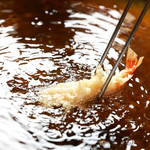
天ぷら新宿つな八 あべのハルカスダイニング店
Tempurashinjukutsunahachi
3.05
Tennoji, Abeno
「Tempura」
5,000-5,999円
1,000-1,999円
Opening hours: Weekdays: 11:00-15:30 (last order 15:00), 17:00-23:00 (last order 20:30), Saturdays, Sundays, and holidays: 11:00-23:00 (last order 20:30) Open Sundays
Rest time: Open daily except holidays (same as Abeno Harukas Kintetsu Flagship Store)
大阪府大阪市阿倍野区阿倍野筋1-1-43 あべのハルカス 13F
Photos
(20)
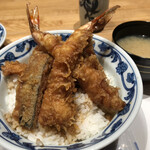
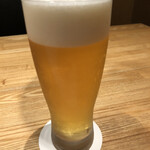
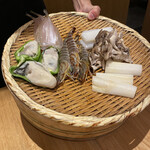
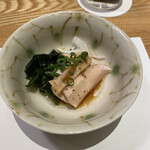
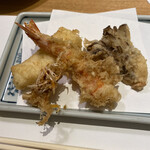
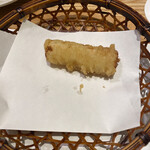
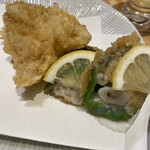
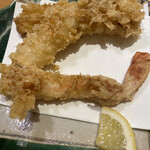
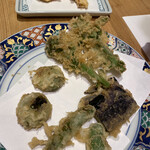
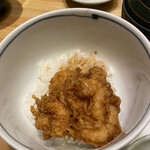
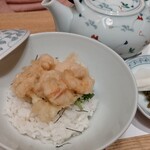
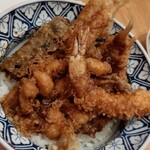
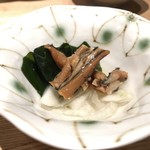
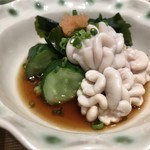
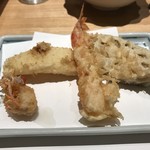
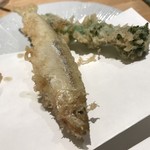
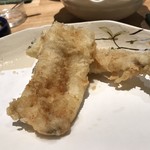
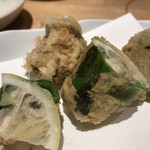
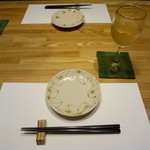
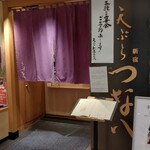
Details
Reservation Info
can be reserved
Payment Method
Cards accepted
Electronic money is not accepted
QR code payment is not accepted
Restaurant Service Fee
nashi (Pyrus pyrifolia, esp. var. culta)
This fee is charged by the restaurant, not related to our platform
Number of Seats
48 seats
(40 seats at tables and 8 seats at counter)
Private Dining Rooms
None
Smoking and Non-Smoking
No smoking in all Abeno Harukas Dining rooms
Parking
Yes
Shared parking available
Facilities
Calm space, counter seating available
Drink
Sake available, shochu available, wine available
Dishes
Stick to vegetable dishes, fish dishes.
Comments
(21)
kuroda
3.30
Located above the Kintetsu Osaka Abenobashi Station, the bustling Abeno Harukas Kintetsu Main Store occupies the 12th to 14th floors of the Harukas Tower building. On the 13th floor, there is an "Edomae tempura specialty store" within the Harukas Dining. This famous store, which was founded in Shinjuku in 1924 as a tempura specialty store, has its main store in Shinjuku, and has multiple locations mainly in the Tokyo metropolitan area. In Osaka, it is only available at the Namba Dining Maison in Takashimaya Osaka Store and here at Abeno Harukas. Before the grand opening of Abeno Harukas, this renowned store opened during the partial opening period. The high-class atmosphere exuded from the storefront made it somewhat intimidating to approach, but I finally visited for lunch as they offer reasonably priced lunch sets. The interior of the restaurant has around 50 seats, including counter and table seating. The design of the space is simple, natural, and sophisticated, typical of a Japanese restaurant. Since I was dining alone, I chose a counter seat close to the chef. Among the various lunch menu options, I ordered the most affordable "Shrimp and Vegetable Lunch" (1,512 yen). Shortly after ordering, I was served with "matching set" (rice, miso soup, pickles), tempura dipping sauce, and grated daikon radish. The chef swiftly arranged three shrimp tempura on a plate. The tempura can be enjoyed with the tempura dipping sauce or with four types of salt (Fleur de Sel, wasabi salt, yukari salt, kelp salt) available on the counter. Although the shrimp were small, the crispy batter was light and had a refreshing texture. The shrimp were firm and flavorful. Shortly after, the vegetables arrived - pumpkin, shiitake mushrooms, and eggplant - each showcasing the natural umami flavor of the vegetables, enhanced by the richness of sesame oil typical of a Tokyo-originated restaurant. At "Tsuna Hachi," they have a custom-made frying oil from a refinery. They proudly display the can of oil next to the counter. Lastly, the eel tempura was served, crispy and fragrant. Frying eel into a shape like a long stick requires great skill from the chef. The miso soup contained plenty of plump clams, rich in clam flavor. The pickles were pickled daikon radish and takana greens. The chef offered me a second serving of rice, but I declined as I was quite full. Although it was a somewhat high-end lunch, I was satisfied with the quality of the food, the atmosphere of the restaurant, and felt it was worth the price. While I generally believe that Kansai cuisine surpasses Tokyo cuisine, I might have to admit that when it comes to tempura, Tokyo-style has the upper hand.
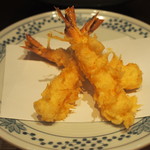
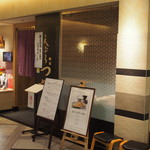
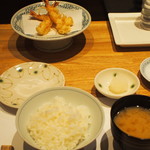
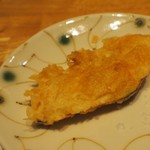
mimimasaya
3.10
Harukas Dining on the 13th floor. The seats were separated and cozy. There were many elderly customers. I had the 1980 yen tempura lunch. I forgot to take a picture, but in addition to the tempura, three other dishes like kakiage were provided. It was delicious, about average. There seem to be other delicious tempura restaurants out there.
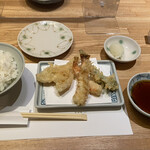
chi22
3.30
We had the "Edomae Zensai Course" and the ingredients before frying were brought to our table. The shrimp was still moving! (laughs) There were a lot of dishes in the course, but we wanted to try more, so we each ordered two additional dishes. Everything was delicious, especially the oysters in the course, they were amazing! We felt like we wanted to try everything on the menu. There were no disappointments. We couldn't decide between the tencha-zuke and the tendon for the finale, but ended up choosing the tendon. Next time, we'll go for the tencha-zuke. The restaurant is located in Harukas, and the prices are a bit high, so the clientele is decent. This is definitely a place we would visit again.




乃莉子
4.00
The tempura was incredibly delicious! We had a luxurious dinner feast. I've never had tempura this delicious before. I won't be able to eat regular tempura anymore (lol). I'm grateful to my partner. Thank you for the feast. (*˘︶˘*).。*♡
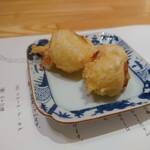
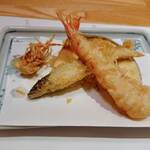
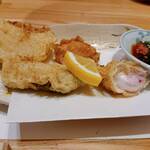
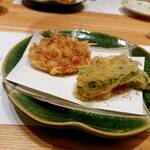
グルメ旅ぐるめ
2.50
Lunch visit☆*:;;;:**:;;;:*☆*:;;;:**:;;;:*☆*:;;;:**:;;;:*☆*:;;;:**:;;;:*☆
■■■ Tempura Tempura Shinjuku Tsunahachi Abeno Harukas Dining Store (Osaka) ■■■
【This Visit】
(Ordered: May 2019, First Visit: May 2019)
・Ordered a set meal
・Bottle of beer @810 yen
・Tempura vegetable set meal 1728 yen
Total: 2,538 yen per person
【Result】
・Average tempura restaurant
・Tempura had too much batter. Oil drainage was poor.
Thank you for the meal
********** ********** ********** ********** *********
【Revisit】
Added photos
Thank you for the meal~ (*^_^*) ☺☻☺☻☺☻
☆*:;;;:**:;;;:*☆*:;;;:**:;;;:*☆*:;;;:**:;;;:*☆*:;;;:**:;;;:*☆
********** ********** ********** ********** *********
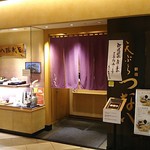
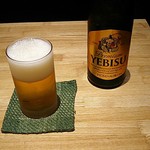
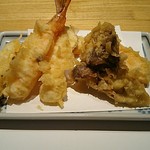
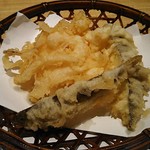
ciaochiz
3.40
During the 3-day weekend, I went to Abeno Harukas for dinner, but all the restaurants were extremely crowded. It was already past 6 PM, but it seems like everyone is quick to act on their days off. I ended up visiting a tempura restaurant because I could get a table quickly, and I must say the tempura was delicious. I ended up ordering a few more dishes. The restaurant is located on the 13th floor of Abeno Harukas Dining. The interior has a few counter seats and mostly table seats. I ordered a set menu first and then added individual items if I was still hungry. The set included small waves, small dishes, shrimp, squid, lotus root, rapeseed blossoms, smelt fish, conger eel, tempura, miso soup, and rice. I also ordered additional dishes like butterbur sprouts, eggplant, and oyster peppers. The butterbur sprouts had a slight bitterness but tasted delicious as tempura. The oyster peppers had a unique flavor, with the taste of peppers initially overpowering and then the flavor of oysters coming through. By the time I finished these additional dishes, I was quite full. I think the tempura at the end was tasty, but I don't remember much about it. I realized I need to plan my orders more carefully next time.




ぴるこ79627
1.00
I received a course for about 9,500 yen. It was just ordinary tempura. It was disappointing as it did not live up to the price. The service was also poor. The salt container was dirty too. It is located in Harukas, so maybe it's a restaurant aimed at foreign tourists. It's a shame. If you eat for 2-3,000 yen during lunchtime, it might be okay.
sumi1225
3.00
I had an Edo-style meal. The golden eye snapper and clams were delicious. I am full now.
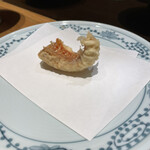
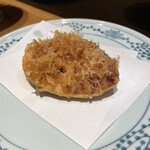
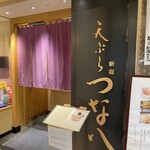
fbb2af
3.40
I visited an Edo-style sushi restaurant in Osaka for the first time in a while. I had a course meal at the counter. The seasoning was strong and paired well with alcohol, making it delicious. However, the batter was a bit greasy. It had a slightly heavy texture... but that heaviness seemed to enhance the sesame flavor even more, so it was just right. The clam and the tempura rice bowl at the end were delicious. Personally, I felt that the course portion was a bit lacking. In terms of the cost performance of the dishes, it was honestly so-so. However, the service was exceptionally attentive and courteous, which was great. The clientele was also good, and I was able to relax and enjoy my time there. Thank you for the meal.
あお0604
4.50
Tempura is delicious, and the service from the waitresses was excellent.
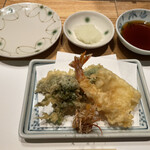
みんみんみ
4.00
It's been a while since I last came back here ☝️ I usually go for the course menu or choose my own dishes, but today I was craving for tempura rice bowl. Tempura rice bowl in the Kanto region is not commonly found in Osaka, so having a taste of home was really delicious ✨
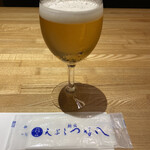
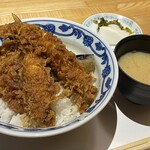
ryoma0729
3.50
This is a specialty Edo-style tempura restaurant on the 13th floor of Abeno Harukas. I used it for entertaining guests. We ordered the full course meal with all-you-can-drink for 8,000 yen per person (including tax). It included seasonal appetizers, three types of sashimi, a seasonal dish, eight pieces of tempura, tempura rice bowl, ice cream, and a choice of 16 drinks. Our guests were also very pleased. I think it's worth using when you're in a pinch for choosing a restaurant for sudden entertaining situations.
9689
3.20


sawawanomori
3.00



カルロス河野
5.00
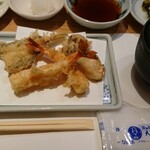
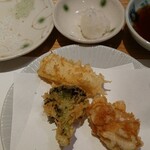
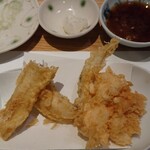
sherpa20jp
3.50
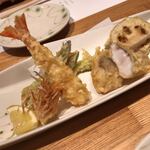
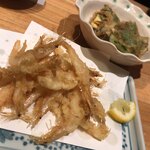
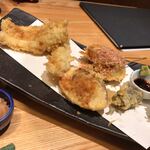
大空ひばり
3.00
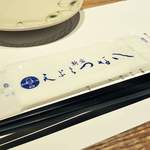

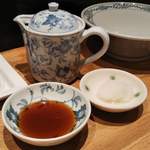

YYY26700
3.60
Tempura!
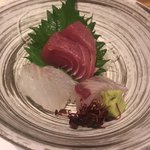
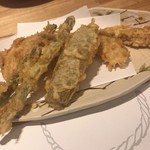
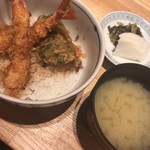
オイルタンク
3.10
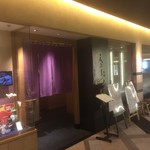
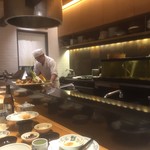
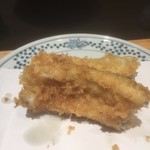

TAQ156
0.00
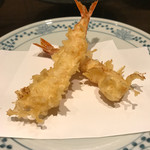

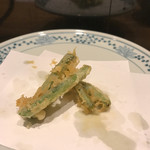
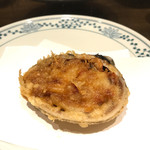
ルーンパ
4.00
Tempura is best enjoyed in the Edo style, using seasonal ingredients for a delicious freshly fried dish. The absence of greasy fried bread-like items commonly found in this area adds to the overall satisfaction.
Email Login